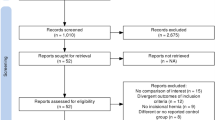Abstract
The objective of this study is to review our experience using the da Vinci robotic system to perform various gynecological surgeries for benign indications. Between July 2005 and April 2008, 110 patients underwent robot-assisted gynecological surgeries in Rochester General Hospital, NY. The records of these patients were retrospectively reviewed by an independent data collector to analyze the safety, effectiveness, and outcome of the surgeries done using the robotic system. The parameters reviewed include indication for surgery, type of procedure, operative time, blood loss, hospital stay, and intraoperative and post operative complications. The procedures completed include 74 hysterectomies including hysterectomies with bilateral salpingoophorectomy, 15 hysterectomies with sacrocolpopexy and other concomitant procedures, 18 myomectomies, and 3 oophorectomies. All procedures were completed robotically without the need for conversion to an open approach. The mean operation time was 2.15 h. Average estimated blood loss was 160 cc. Complications encountered include one cystotomy which was identified immediately and repaired in addition to one vault dehiscence and two post operative infections. The mean hospital stay was 1 day, with more than half of the patients being discharged within 24 h after the surgery. Post operative pain level was in the range of 0–6 in a scale of 0–10 (0: no pain, 10: worst pain in their life) and relieved by non-steroidal anti-inflammatory drugs. Robot-assisted laparoscopic benign surgical procedures are feasible techniques in a community setting. Robot-assisted laparoscopy has a promising future in minimally invasive surgery as it proved beneficial for our patients who experienced low complication rate and overall fast recovery compared to other approaches.
Similar content being viewed by others
References:
Wilcox LS, Koonin LM, Pokras R et al (1994) Hysterectomy in the United States, 1988–1990. Obstet Gynecol 83(4):549–555
Farquhar CM, Steiner CA (2002) Hysterectomy rates in the United States 1990–1997. Obstet Gynecol 99(2):229–234. doi:10.1016/S0029-7844(01)01723-9
Olive DL, Parker WH, Cooper JM, Levine RL (2000) The AAGL classification system for laparoscopic hysterectomy. Classification Committee of the American Association of Gynecologic Laparoscopists. J Am Assoc Gynecol Laparosc 7(1):9–15. doi:10.1016/S1074-3804(00)80004-3
Jenkins TR (2004) Laparoscopic supracervical hysterectomy. Am J Obstet Gynecol 191(6):1875–1884. doi:10.1016/j.ajog.2004.06.096
Perino A, Cucinella G, Venezia R et al (1999) Total laparoscopic hysterectomy versus total abdominal hysterectomy: an assessment of the learning curve in a prospective randomized study. Hum Reprod 14(12):2996–2999. doi:10.1093/humrep/14.12.2996
Vogeli TA, Burchardt M, Fornara P et al (2002) Current laparoscopic practice patterns in urology: results of a survey among urologists in Germany and Switzerland. Eur Urol 42(5):441–446. doi:10.1016/S0302-2838(02)00399-8
Diaz-Arrastia C, Jurnalov C, Gomez G, Townsend C Jr (2002) Laparoscopic hysterectomy using a computer-enhanced surgical robot. Surg Endosc 16(9):1271–1273. doi:10.1007/s00464-002-8523-5
Reynolds RK, Advincula AP (2006) Robot-assisted laparoscopic hysterectomy: technique and initial experience. Am J Surg 191(4):555–560. doi:10.1016/j.amjsurg.2006.01.011
Degueldre M, Vandromme J, Huong PT, Cadiere GB (2000) Robotically assisted laparoscopic microsurgical tubal reanastomosis: a feasibility study. Fertil Steril 74(5):1020–1023. doi:10.1016/S0015-0282(00)01543-0
Margossian H, Falcone T (2001) Robotically assisted laparoscopic hysterectomy and adnexal surgery. J Laparoendosc Adv Surg Tech A 11(3):161–165. doi:10.1089/10926420152389314
Mettler L, Ibrahim M, Jonat W (1998) One year of experience working with the aid of a robotic assistant (the voice-controlled optic holder AESOP) in gynaecological endoscopic surgery. Hum Reprod 13(10):2748–2750
Elliott DS, Chow GK, Gettman M (2006) Current status of robotics in female urology and gynecology. World J Urol 24(2):188–192. doi:10.1007/s00345-006-0071-5
Leminen A (2000) Comparison between personal learning curves for abdominal and laparoscopic hysterectomy. Acta Obstet Gynecol Scand 79(12):1100–1104. doi:10.1034/j.1600-0412.2000.0790121100.x
Author information
Authors and Affiliations
Corresponding author
Rights and permissions
About this article
Cite this article
Piquion-Joseph, J.M., Nayar, A., Ghazaryan, A. et al. Robot-assisted gynecological surgery in a community setting. J Robotic Surg 3, 61–64 (2009). https://doi.org/10.1007/s11701-009-0130-1
Received:
Accepted:
Published:
Issue Date:
DOI: https://doi.org/10.1007/s11701-009-0130-1




